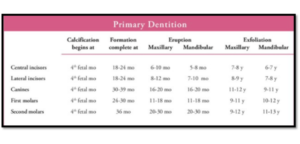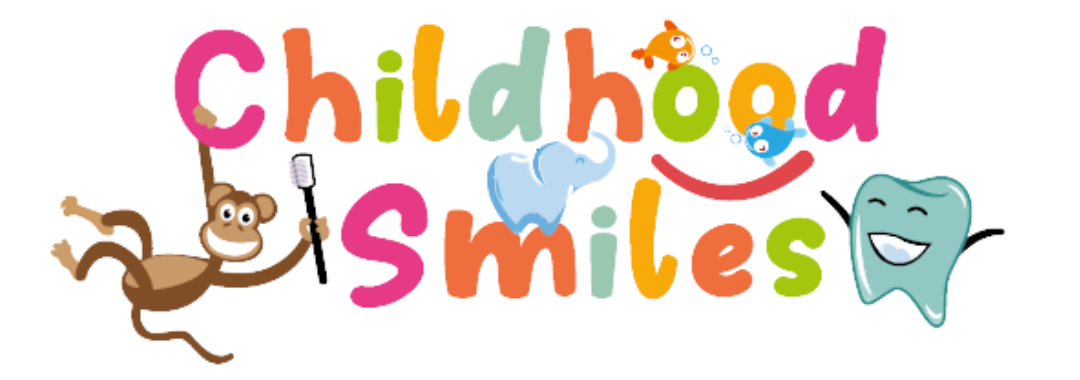Frequently Asked Questions
Age Group: 0-3 years
1. When will my baby get his/her first tooth?
Using the following chart, please make an easier model with teeth.

2. Do we have to clean our baby's gum pads?
Yes! Gum pads of your baby need to be cleaned daily. Preferably after feeding using a clean, sterile gauze piece or clean, dry cloth. This will prevent the accumulation of milk residues as well as bacteria on the gum pads.
3. When can we start brushing for our baby?
As soon as the first baby tooth erupts, brushing can be started.
4. Which toothbrush should we use for our baby?
Preferably, a small finger brush with a round head, smooth ends, soft bristles can be used for small babies.
5. Which toothpaste is best for my baby?
Tiny smear/rice grain size of fluoridated toothpaste is appropriate to use.
6. What is the best brushing method for my baby?
Using a small, soft toothbrush, try to clean all the teeth surfaces. Special attention must be given to lift the upper lip and clean the upper front teeth thoroughly. Don't forget to clean the chewing surface of molar teeth properly.
7. What are the expected symptoms during teething?
Teething is a normal part of every child's development. It is normal for the children to feel irritable, drool excessively, refuse to eat because of pain and often get rashes on the face. However, many children have no apparent difficulties.
8. Is it normal to have a fever during teething?
Fever during teething is less likely related to teething. Parents must visit the Pediatrician and take the necessary treatment.
9. How can we take care during teething?
Excessive drooling of saliva is normal during teething. Therefore, keeping the mouth, face, corner areas of lip clean will reduce the pain, discomfort and chances of facial rashes of your child.
10. What treatment is advised for teething?
Treatment of teething symptoms includes biting pressure by means chilled teething rings can be useful. Use of oral analgesics, topical anaesthetics, including over-the-counter teething gels to relieve discomfort are advise however discouraged over a period of time due to potential toxicity of these products in infants.
11. When should we discontinue feeding?
The American Academy of Pediatrics recommends that Breastfeeding should be exclusive for about the first six months of life and should continue, with the introduction of appropriate complementary foods, to at least age 12 months or beyond, as desired by mother and child. Bottle-feeding should be discontinued by the age of 12 months. Considering the risk of development of early childhood decay, weaning by 12 months of age is advised.
12. What is the correct approach to achieve weaning?
There is no specific method for weaning. Choose the one comfortable for you and your baby. Start slowly and remember the involvement of both parents is important to achieve success in weaning.
13. When can we have the first dental visit for our baby?
As soon as your baby gets the first milk tooth, it's time to plan the first dental visit. If at all you miss the first dental visit during 1st tooth eruption, try to plan your visit by your baby's 1st birthday. The reason we want an early age oral examination is to provide preventive oral health care instructions to avoid early childhood decay and childhood dental trauma.
14. Is it possible to get cavities at such a young age?
Absolutely yes! Early childhood decay is one of the most common diseases that can affect a baby before two years of age. Prolonged Breastfeeding, bottle-feeding at night, and the use of sweetened milk/oral solutions/pacifiers without proper oral hygiene measures doubles the risk of decay. As the content of the bottle remains attached to the teeth surface (upper front teeth mainly), it becomes easy for the bacteria to feed on the sugar and cause early tooth decay.
15. We don't give any chocolates, then how is it possible for my baby to have cavities?
Sugar is not only restricted to chocolates. Sugar in refined form added to the milk, fruit juice, sweets, bakery products, cooked food items is equally responsible for tooth decay as chocolates. Frequent consumption of refined sugar in any form can cause tooth decay. It is necessary to reduce the frequency of consumption of refined sugar and related products, also if required, replace the refined white sugar with the natural form of sugar, e.g. honey, jaggery, palm sugar.
16. How can we prevent tooth decay at an early age of our baby?
Age-appropriate oral hygiene measures, reduced frequency of sugar and related product consumption and routine dental visit are the three key factors to be considered for healthy and decay-free oral cavity/mouth. First dental visit and preventive oral health care instructions provided by Paediatric dentist can help in preventing early childhood decay.
17. In the case of a cavity, is it important to treat the milk teeth? Can't we just extract it?
Preservation of milk teeth is important simply because they help the child to chew food properly, aid in speech development, maintain esthetics, preserve space for the permanent tooth bud in the jaw and avoid abnormal oral habits like tongue thrusting. Moreover, when a cavity is in a treatable condition, appropriate treatment must be considered rather than extracting the tooth unnaturally before time.
Age Group: 3-6 years
1. How often should we bring our kids for a dental visit?
Routine dental check-up is advised at least once in 6 months. If there is an early childhood decay-related oral health issue, you must plan a routine visit once in 3 months.
2. Which toothpaste is best for my kid?
Pea-sized fluoridated toothpaste is best suitable for 3-6year aged kids.
3. Can my kid use an electric toothbrush?
Yes! With parental guidance, an electric toothbrush can be used.
4. How many times my kid should brush in a day?
Brushing twice daily (once in the morning and once before going to bed in the night) is advised for all the kids.
![]() Minimum brushing time is for how long?
Minimum brushing time is for how long?
![]() Each time your baby is brushing, a minimum of 2 minutes of brushing time is advised.
Each time your baby is brushing, a minimum of 2 minutes of brushing time is advised.
5. Is there any particular brushing technique?
Ideally, for small kids, brushing must be done under parental guidance. Follow these three steps for thorough cleaning.
Step 1: Place the toothbrush beside the teeth at an angle, preferably a 45-degree angle.
Step 2: Gently brush only a small group of teeth at a time (in a circular or elliptical motion) until the entire mouth is covered.
Step 3: Brush the outside of the teeth, inside of the teeth, and the chewing surfaces. Take the help of our paediatric dentist to learn this technique personally.
6. Do we have to start flossing for our kids at this age?
- Flossing between the teeth is recommended for areas where toothbrush bristles can’t reach. Milk teeth of children are either spaced or non-spaced. If they are spaced, then flossing is not required. If there is no space between the teeth, then using dental floss, mainly between the molar teeth, will be helpful. Parental guidance is a must for flossing.
7. What are these black stains on my kid’s teeth?
Black stains are an indication of poor oral hygiene. Formed by the bacteria using saliva and food debris present on the tooth surface. These are not cavities but definitely represents early signs of decay.
8. Is Fluoride application safe for my kid?
The fluoride acts as a protective barrier against tooth decay by making the tooth structure stronger. Professional fluoride application must always be made as per the need of the under the guidance of Paediatric dentist.
9. Is my kid going to lose all the milk teeth by six years of age?
A big no. Similar to the eruption of milk teeth, exfoliation of the milk teeth also follows a sequence and time range. Exfoliation of milk teeth commonly starts at six years of age; however, not all the teeth exfoliate at the same time.
10. What is the best treatment for milk teeth cavities?
There is no universal treatment for cavities in milk teeth. Based on the severity of the cavity, risk factors associated, age of the child, overall health condition, treatment for a cavity is planned. Fluoride application, Diet modification, Restoration (filling), Root canal treatment, crowns are a few to mention.
11. What is the reason for filling the baby teeth?
Filling (Dental restorations) are done to prevent further spread of the cavity deeper into the tooth, avoid food debris, bacterial accumulation, and allow repair of the tooth tissue and preserve the tooth until natural exfoliation.
12. What is the best filling material for baby teeth?
Depending on the stage/severity of the decayed tooth material for tooth filling is decided. Tooth coloured fluoride-releasing filling materials are suitable for milk teeth. e.g. Glass Ionomer Cement Restorations, Composite Restorations.
13. Is root canal treatment safe for my kid?
Absolutely Yes! Root canal treatment (pulpectomy) for milk teeth is done to remove all the infected pulp tissue and fill the tooth completely with a suitable biocompatible material in order to preserve the tooth until natural exfoliation and prevent the spread of infection to the permanent tooth bud. Materials used in the process are completely safe for the baby, milk tooth and permanent tooth bud.
14. What is a dental cap?
A dental cap (Crown) is a full-coverage restoration for a grossly decayed tooth that can’t be restored conventionally and following root canal treatment. The crown covers the entire tooth surface protecting it from further damage. It also provides the strength similar to the natural tooth to chew properly till natural exfoliation. There is no side effect of the dental cap on permanent tooth development.
15. Is the material of stainless-steel cap safe for my kid’s tooth?
Yes! Stainless steel crowns are the safest ones in use. However, if your child has a nickel allergy, you must inform us prior since nickel is a component of a stainless-steel crown.
16. What are zirconia caps/crowns?
Zirconia crowns are tooth coloured crowns. Preformed (Readymade) zirconia crowns are available for both front and back teeth. These crowns are the best aesthetic crown options for milk teeth.
17. Can injury/cavity of milk teeth affect permanent tooth bud?
The permanent tooth bud develops below the milk tooth. The untreated cavity of milk tooth with abscess and periapical infection can hamper the development of permanent tooth bud. Severe trauma or injury to the milk tooth can result in the transmission of force all the way to the permanent tooth bud and affect its development process.
18. What is a space maintainer?
Space maintainer is a fixed appliance placed in the child’s mouth to maintain the space created by premature/early loss of the milk tooth. It can be a removable or fixed appliance. The design and type of the space maintainer are decided based on the teeth lost, teeth present and developmental age of the child.
19. Is x-ray safe for my kid?
Dental x-rays are safe. Usually, an x-ray is recommended to make a treatment plan for decayed teeth, irregularly placed teeth, traumatized(injured) teeth etc. Repeated x-rays are mainly advised if multiple decayed teeth are treated. The time interval between subsequent x-ray is decided by the dentist.
20. How can we stop thumb sucking for our kids?
Thumb sucking usually does not require any dental treatment for kids of 2-5 years of age. Simple home care like reminder therapy to not suck the thumb, praising and awarding the kid for not sucking the thumb can help the little ones. Beyond five years of age, if your kid still continues to do thumb sucking, then a habit breaking appliance can be given. The type of appliance is decided by the treating Paediatric dentist.
21. Is it normal for my child to have a gap between the teeth?
Spaced dentition ( gap present between the milk teeth) is normal and ideal for a child. Since the permanent teeth are bigger in dimension, the extra space is utilized to accommodate the new teeth.
Age group: > 6 years
1. When will my kid get his permanent teeth?

2. Why does my child have two rows of teeth?
Two rows of teeth are commonly found in the lower front teeth area. When the new teeth erupt and milk teeth are still present in the oral cavity, two rows of teeth appear. Visiting the Paediatric dentist and making an x-ray can help to find out the root length of the retained milk teeth. In most of the cases, the milk teeth automatically fall out if not it needs to be extracted.
3. Why does my child have ugly looking space between his upper new teeth?
The large space present between two newly erupted upper central incisors (centre teeth) is a part of normal tooth and jaw development. With the eruption of canine teeth (corner teeth), the gap between the centre teeth seems to close completely. However, if there is any other abnormal factor, e.g. thick frenum tissue in between the two centre teeth, then consulting a Paediatric dentist, making required x-ray and treatment plan can help better.
4. Having few teeth missing is normal in some kids?
Missing teeth could be single or multiple. The reason for missing teeth could be genetic or any local blockage on the path of eruption. Visiting your Paediatric dentist and taking required X-rays can help find out the cause and plan the needed treatment.
5. What is a dental sealant?
A dental sealant is a protective cream that is applied to the grooves present on the chewing surface of molar teeth (both primary and permanent molar teeth). Since the grooves are narrow and deep chances of food accumulation is more in these areas. Application of sealants in these areas make the grooves self-cleansing and does not allow food accumulation, thereby reduces the chances of the cavity in the molar teeth.
6. What is a habit breaking appliance?
A habit breaking appliance is prescribed to break/ intervene in an abnormal oral habit. Beyond 6years of age, if the oral habit still persists for your child and doesn’t get self-corrected, then your child’s Paediatric dentist will give an appliance to wear. The type and duration of wearing of the appliance are decided by the Paediatric dentist based on the severity of the oral habit.
7. What is crowding?
Dental crowding in simpler terms means irregularly placed teeth. It commonly occurs due to a lack of space for the erupted teeth in the jaw. Sometimes the jaw size could be normal, but teeth size could be bigger that also leads to crowding. Your child will require an orthodontic intervention for the correction of crowding. Based on the severity of crowding, treatment is decided. Visiting your Paediatric dentist and discussing in detail would help better.
8. Does my kid need braces now at this age?
Braces or conventional orthodontic treatment is advised once all the new permanent teeth have erupted by the age of 13-14years. However, to reduce the severity of the teeth malocclusion and complications in the future preventive and interceptive orthodontic treatment is advised at a young age. Ask our Paediatric dentist to explain in detail.
9. Does my kid need a mouthguard?
If your kid is into outdoor sports activity, especially contact sports, then a mouthguard is a must. Since the chance of accidental fall and injury is high in such type of sports format, wearing a mouthguard will protect the dentoalveolar structure, i.e. the jaw as well as the teeth from fracture and severe injury. Customized mouthguards are always preferable.
10. If my baby had bad milk teeth, will he have bad new teeth too?
Simple answer is no. Because cavity occurs when the diet is loaded with sweet sticky food and liquid items, with a high consumption frequency and poor oral hygiene measures, if care is taken in terms of a balanced diet, good oral hygiene care, and regular dental visits, then despite bad/decayed milk teeth the new teeth will remain completely cavity-free. This requires thorough effort from parents, children and guidance from the Paediatric dentist’s side.



